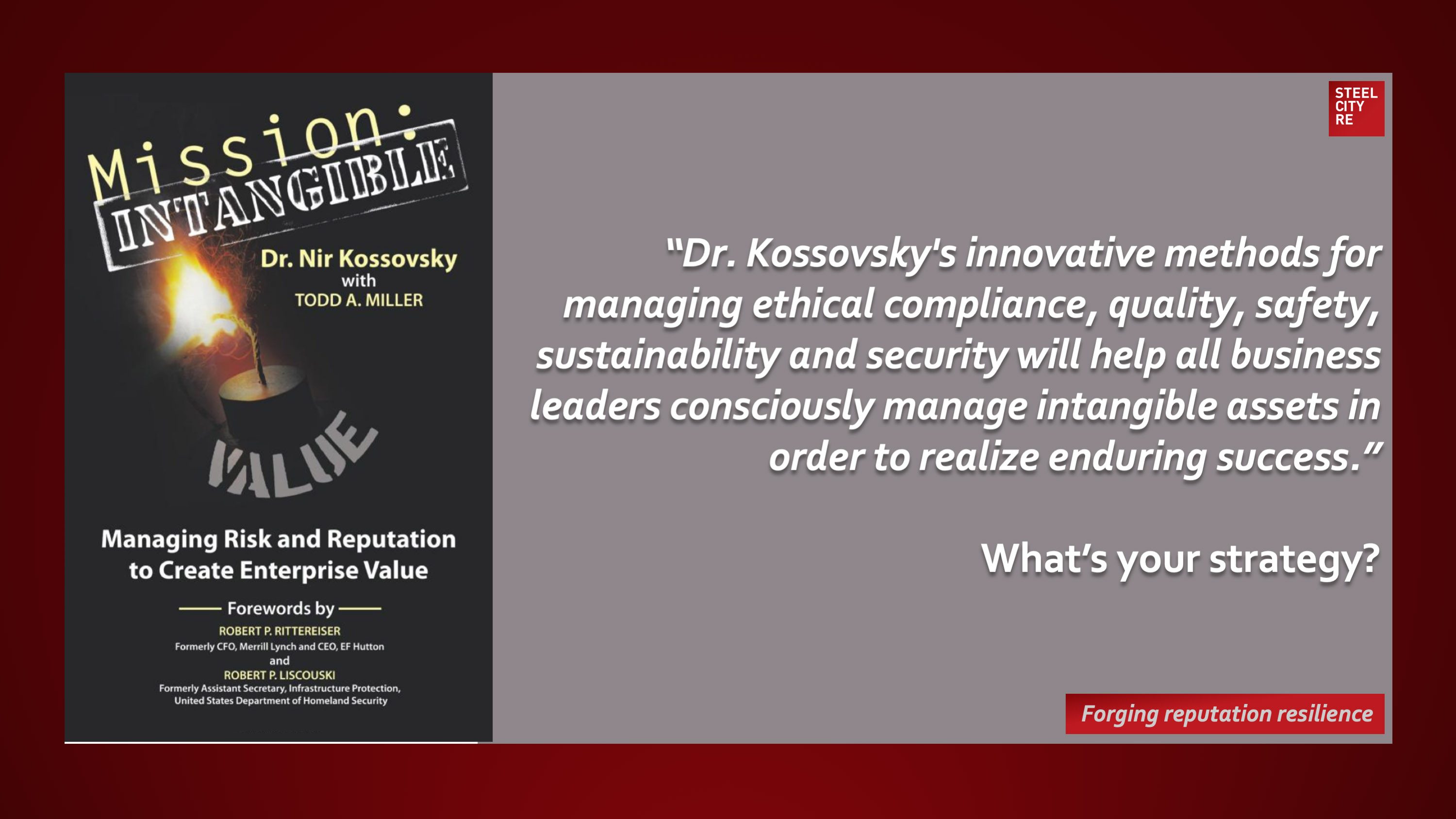Develop better communication strategies for stakeholders
Realize how superior management of intangible assets creates a competitive edge
Mitigate risks that may damage the value of intangible assets
Build a business case for resources and achieve a healthy return on investment
Identify intangible assets and how they contribute to a company’s enterprise value
Dr. Nir Kossovsky has spent the last thirty years increasing, protecting, and restoring intangible asset value and together with Todd Miller, a public relations expert, provides convincing and tangible methods for protecting a company’s assets, driving value, and making the business case. Business leaders will learn how to:
In Managing Risk and Reputation to Create Enterprise Value, the CEO of Steel City Re shares value-creating strategies for conquering headline risks that will help company executives, C-suite leaders, and directors protect the most critical components of their businesses.
February 24, 2010
Mission: Intangible
Dr. Kossovsky’s innovative methods for managing ethical compliance, quality, safety, sustainability and security will help all business leaders consciously manage intangible assets in order to realize enduring success.
Reputation is Mission-Critical
A management program for ethics and compliance can forestall prosecution and mitigate fines. Similarly, oversight of “mission- critical” issues can forestall securities litigation. A program for reputation resilience, comprising both risk management and insurance (reinsurance)-authenticated oversight for all that is mission-critical, can create value in many ways. To this end, Steel City Re offers a Reputation Resilience Program.
Having a robust Reputation Resilience Program in place offers, amongst other benefits:
- Protection for the company, its staff, executives, and board from litigation and regulatory challenges
- Improved governance processes and better enterprise risk management protocols; i.e., measuring reputational risk
- Establishment of an agile operating, communications, and decision-making team, with clear roles and responsibilities, trained and ready to handle all reputational threats; i.e., a reputation risk management framework
- Proactive management of risks that could give rise to delays or derailing concerns around new product and strategic partnership launches
- Captured behavioral economic value from stakeholders; i.e., value of reputation
- Reduced costs of debt and risk transfer while boosting equity value; i.e., boosting reputational value
A hazard of reputation risk is a lurking gap between stakeholder expectations and reality. Another hazard is the emotional intensity associated with expectations. The peril is anger from disappointed stakeholders. This video and this written summary explain the behavioral economic features of the many perils of reputation risk.
Illustrated Guide to Reputation Risk Management. Mitigating risk strategically through expectation management and operational adjustments evinces thoughtful management and dutiful governance. Financing such risks evinces prudence, and doing so publicly enables stakeholders to appreciate and value the effort. These comprise the core of Steel City Re’s professional services.
One Question
Illustrated Guide to Reputation Risk Management. ESG-linked reputation risks are prevalent and material. Are reinsurance and insurance for ESG-linked reputation risk part of your strategy?

